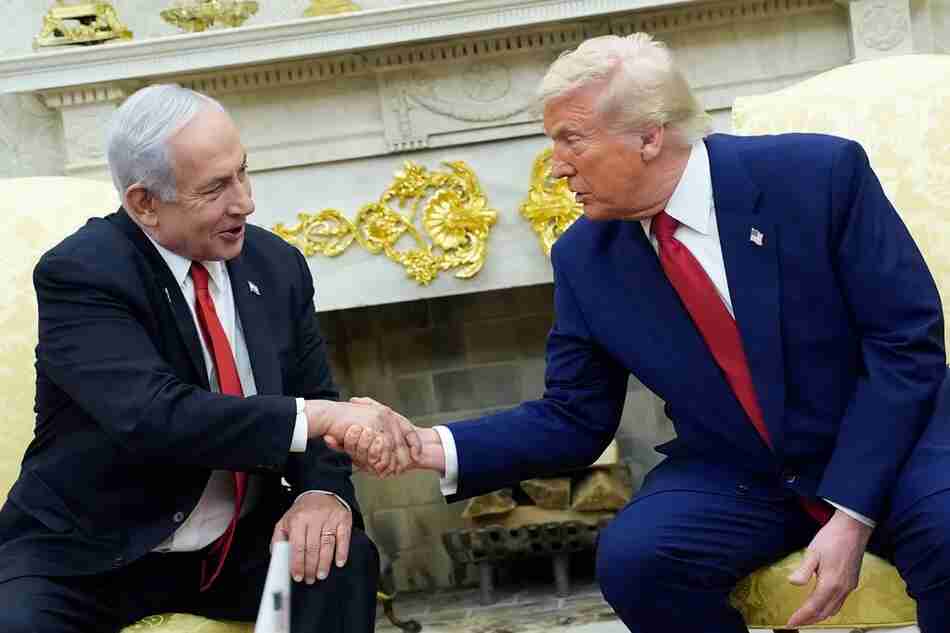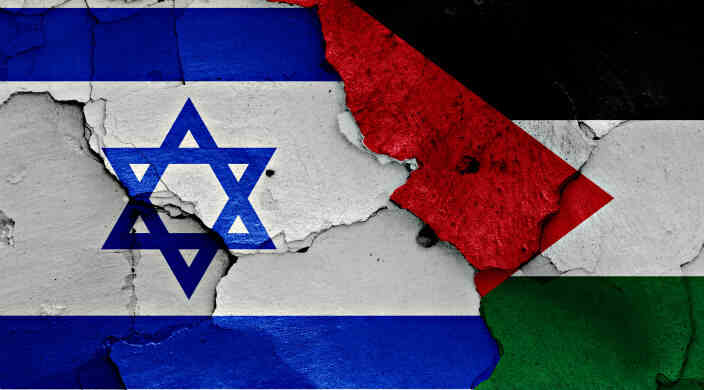🔥 From Rubble to Resistance: Hamas’s Evolution Under Fire
Hamas Embraces Guerrilla Tactics: The skyline of Gaza no longer resembles a city—it looks like a battlefield. Israeli airstrikes have turned neighborhoods into ash. Infrastructure lies in ruins. Communications flicker. Yet amid the destruction, Hamas has not collapsed. It has adapted.
In 2025, the group has shifted from frontal assaults to low-tech but high-impact guerilla tactics. These moves include underground tunnels, booby-trapped urban warfare, and fast-moving ambush squads.
Despite being battered, Hamas has not been broken. Instead, it has grown more unpredictable—and, some say, more dangerous.
🎯 The Strategic Pivot: Why Hamas Embraces Guerrilla Tactics Now
💣 From Rockets to Resistance: Adapting to Overwhelming Firepower
Israel’s advanced Iron Dome and drone surveillance systems have neutralized traditional rocket attacks. In response, Hamas has gone underground—literally.
Fighters move through tunnels, coordinate attacks via encrypted devices, and avoid open engagements. The shift reflects a key lesson from insurgent warfare: you don’t fight strength with strength. You fight it with speed, stealth, and terrain advantage.
🏚️ Urban Warfare as a Battleground Strategy
Tight alleys. Dense buildings. Civilian shields. Hamas has turned Gaza’s landscape into a defensive maze. By hiding among civilians, they blur the lines between military and humanitarian zones—posing a dilemma for Israeli forces trying to root them out.
🧠 A Brief Education: Hamas Embraces Guerrilla Tactics [Warfare 101]
What is guerilla warfare? It’s a form of irregular warfare where smaller forces use sabotage, ambushes, and hit-and-run tactics against larger traditional armies.
Historically used by:
- Vietnam’s Viet Cong
- Afghan Mujahedeen against the Soviets
- Hezbollah in Southern Lebanon
Guerilla warfare thrives where conventional armies struggle—tight cities, remote mountains, or broken terrain. And in Gaza’s shattered environment, these tactics now dominate.
💬 On the Ground: What Civilians and Fighters Are Saying
“I don’t see soldiers anymore,” says Laila, a teacher from northern Gaza. “They come and go like shadows—just like the war.”
Mohammed, a 19-year-old fighter, describes the shift bluntly:
“We used to shoot rockets. Now we carry grenades and vanish before they fire back. That’s how we survive.”
Meanwhile, families in Gaza face impossible decisions. Stay and risk being caught in a crossfire—or flee without shelter, food, or medical care.
🧩 The Bigger Picture: What This Means for the Middle East
Hamas Embraces Guerilla Tactics: Hamas’s new guerilla playbook signals something larger: a long war of attrition, not swift defeat.
🛑 A War Without Frontlines
Battles no longer happen on clear frontlines. They happen in bedrooms, stairwells, and tunnels. This makes ceasefires difficult and civilian casualties unavoidable.
💣 Hamas Embraces Guerrilla Tactics: The Psychological Warfare Factor
Constant fear of sudden attacks creates mental strain. Israeli citizens face sudden lockdowns. Palestinians live under drones and explosions. It’s a conflict where psychological exhaustion becomes a weapon.
🤝 Global Reactions Are Splitting
- Arab states issue diplomatic condemnations but fear destabilization.
- Western powers walk a tightrope—supporting Israel while urging restraint.
- Human rights groups document growing civilian tolls on both sides.
📊 By the Numbers: Facts You Need to Know
- Over 21,000 buildings damaged or destroyed in Gaza since January
- Nearly 300 tunnels found under Gaza City alone
- Civilian injuries from improvised traps up 45% in Q1 of 2025
- Israel reports 14% rise in military injuries due to ambushes
- Hamas casualty estimates remain unknown—many fighters blend into civilian life
Hamas Adopts Stealth and Surprise: A Tactical Shift in a War of Endurance
Hamas’ military arm, the Al-Qassam Brigades, recently claimed responsibility for a deadly ambush on Israeli forces, stating the attack occurred in an area Israel had “cleared” and believed to be safe.
The group declared that the war has evolved into a prolonged “battle of attrition,” aimed at inflicting steady losses on Israeli troops. Hamas also emphasized its ongoing intent to capture more soldiers, referencing its initial hostage-taking operation on October 7.
Despite Israel’s high-tech defenses and ground operations, Hamas fighters have repeatedly found ways to strike. One of the most dramatic incidents occurred in Khan Younis, where militants targeted an Israeli military engineering vehicle using a rocket-propelled grenade. In footage released by Hamas, fighters are seen rushing the vehicle as the driver attempts to escape.
The Israeli Defense Forces (IDF) confirmed the assault, saying the attackers attempted to kidnap the soldier but ended up killing him. Israeli troops nearby responded swiftly, preventing the abduction.
Shortly after, Al-Qassam vowed that “the next soldier’s fate will be different—he will be our new prisoner.”
Hamas Embraces Guerrilla Tactics Gaza vs. Iran: Two Different Battlefields
The urban combat in Gaza stands in stark contrast to Israel’s surgical, low-casualty military campaign in Iran earlier this year.
That operation, executed mostly via airstrikes and elite units, resulted in zero Israeli casualties. Gaza, however, has proven far more costly. Since the end of the Israel-Iran conflict, at least 19 IDF soldiers have been killed in Gaza, according to the military.
One of the most devastating attacks occurred the day the Israel-Iran ceasefire was declared. A Hamas militant dropped an incendiary device into an armored engineering vehicle in southern Gaza, killing all seven soldiers inside—a deadly blow and a grim reminder of how dangerous the urban battlefield has become.
Hamas Regroups Despite Heavy Losses
Former IDF Chief of Staff Lt. Gen. Herzi Halevi reported in January that Israeli forces have eliminated approximately 20,000 Hamas fighters.
Top-tier leaders have also been killed in targeted strikes. However, Hamas continues to rebuild.
According to senior Israeli military sources, the group has replenished its ranks with new recruits. Kan News, Israel’s public broadcaster, reported in March that “hundreds” of new militants have joined Hamas’s ranks.
What remains of Hamas today is a network of scattered militant cells—flexible, decentralized, and increasingly lethal. These units use Gaza’s ruins and surviving tunnel systems to launch hit-and-run attacks and evade capture.
Hamas Embraces Guerrilla Tactics: Turning Israel’s Strengths Into Weaknesses
Retired Major General Israel Ziv, former head of the IDF’s Operations Directorate, told CNN that Hamas has learned from past encounters and is using Israel’s strengths against it.
“Their strategy is no longer about holding ground,” Ziv explained. “They focus entirely on ambushes and surprise attacks. They look for soft spots. It’s target-focused, not territory-based.”
He added that manpower constraints on the Israeli side have created gaps in coverage that Hamas is now exploiting.
“Hamas has become a full-fledged guerilla force, operating in small, mobile cells. Much of their explosive inventory comes from Israeli ordnance dropped during this war. Every IED they plant is recycled resistance.”
Hamas Embraces Guerrilla Tactics: Asymmetric Tactics and Elusive Targets
Operating as independent squads, these militants are far harder to locate than a centralized command structure.
Also, one senior Israeli officer admitted that “targeting what’s left of Hamas” has become more challenging. Tactical success is now more elusive than ever.
With its rocket stockpile nearly depleted, Hamas now launches only occasional missiles, most of which are intercepted or miss entirely. But the real danger lies in their mobility. Fighters move through the shattered remains of Gaza with homemade bombs and small arms, striking and retreating before Israeli troops can respond.
The urban devastation—once a symbol of defeat—has become a strategic advantage.
Internal Struggles and External Threats
Hamas is also contending with unrest from within. Armed gangs in southern Gaza and a war-weary population have openly criticized the group’s leadership.
Yet despite internal dissent, Hamas continues to mount operations, making each week without a ceasefire costlier for Israeli forces.
Diplomacy on Pause: The Doha Talks and Netanyahu’s Stance

Ongoing negotiations in Doha offer glimpses of progress, but a truce remains out of reach. One of the key obstacles? Israel’s demand for Hamas to fully surrender its military and administrative powers.
Prime Minister Benjamin Netanyahu, during his latest visit to Washington, reiterated this demand. He warned that without Hamas laying down arms, military operations would resume at full scale.
So far, Hamas has shown no willingness to comply. Their recent attacks signal they still hold operational power and intend to use it. The war drags on, fueled by broken talks, hardened positions, and continued violence.
🛠️ Tactical Breakdown: Key Guerrilla Tactics Used by Hamas
🔻 Tunnels: The Underground Lifeline
Used for surprise attacks, arms transport, and movement under siege, these tunnels span across entire neighborhoods. Some even reach into Israel.
💥 IEDs and Booby Traps
Improvised explosive devices now line abandoned homes and streets. Israeli soldiers must clear each building inch by inch.
🎯 Sniper Nesting and Disguised Units
Snipers perch in partially collapsed buildings, using broken architecture for cover. Fighters sometimes disguise themselves as aid workers.
📱 Encrypted Coordination
Hamas uses apps and digital tools to issue real-time commands. With every strike, they disperse, regroup, and strike again.
🧠 Hamas Embraces Guerrilla Tactics Expert Insight: What Military Analysts Say
“Israel may control the sky, but Hamas now owns the urban terrain,” says Lt. Col. Ben Cohen, a retired IDF commander. “This isn’t about weapons. It’s about adapting faster than the enemy.”
Dr. Zainab Wahid, a political analyst in Beirut, adds:
“We’re seeing the return of fourth-generation warfare: decentralized, ideologically-driven, and almost impossible to eliminate with bombs.”
🔥 Emotional Toll: Life Caught Between War and Survival
For Gaza residents, every day is survival. Parents teach their children to recognize drone sounds. Hospitals run without electricity. School classrooms double as shelters.
Israeli civilians live under constant threat, rushing to bunkers with every siren. Anxiety, PTSD, and fear shape both societies.
You also may be interested in: Netanyahu Leaves White House Quietly— And Leaves the World Waiting
💡 Hamas Embraces Guerrilla Tactics What Comes Next?
Unless political solutions emerge, guerilla warfare will define the conflict. These tactics allow Hamas to endure despite overwhelming odds—and prolong suffering on both sides.
✅ What You Can Do to Stay Informed and Responsible
- Follow credible news sources: Avoid disinformation and rumors.
- Support humanitarian orgs: Medical Aid for Palestinians, Magen David Adom, etc.
- Read beyond headlines: Understand context, history, and impact.
- Talk responsibly: Online debates can shape perception. Choose words with care.
👉 Subscribe to our Conflict Analysis Newsletter for weekly breakdowns, maps, and context 👉 Share this article to help others understand the evolving nature of guerilla warfare 👉 Comment below: What are your thoughts on asymmetric warfare in the 21st century?
This isn’t just war—it’s evolution in real time. Understand it. Spread awareness.

